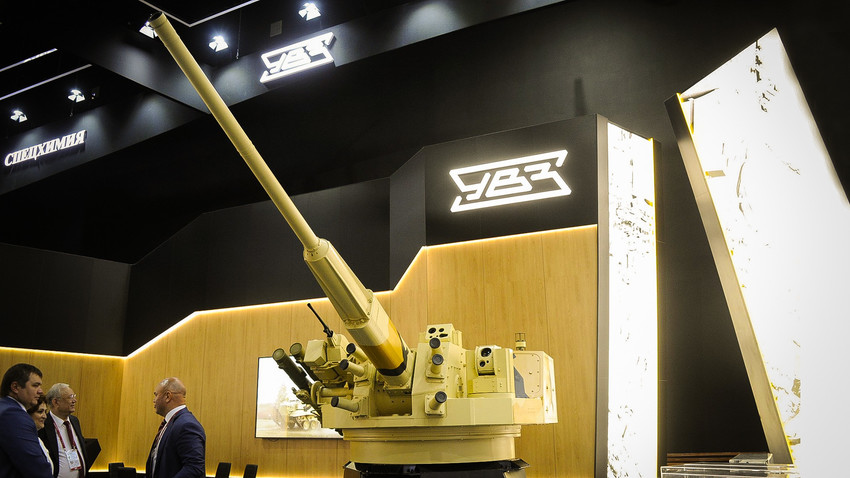Russia creates new artillery gun for “land, water, and sky”

In late June, at the Army-2019 weapons show outside Moscow, the machine-building corporation Uralvagonzavod unveiled its latest development, the 57-mm AU-220M artillery gun – a first-of-its-kind versatile weapon for “land, water, and sky.”
“To date, JSC Central Scientific Research Institute Burevestnik has laid the scientific and technical groundwork to create, in the interests of Russia’s land, air, aerospace, and naval forces, an interspecific 57-mm armament system on the basis of a unified combat module on a multipurpose land chassis, as well as on aircraft and ships,” stated Georgy Zakamennykh, general director of Burevestnik (part of Uralvagonzavod), the developer of the weapon.
The system is the intellectual heir of the ZSU 57-2 self-propelled anti-aircraft gun of the 1950s (nicknamed the “infernal thresher”). That weapon achieved a then unimaginable rate of artillery shell fire of 80 rounds per minute.
In turn, the new version of the gun produces up to 120 volleys per minute. It has an extended strike radius of up to 9 km for aerial
On top of that, the combat module exists in two versions: heavy (weighing 5,000 kg) for heavy tracked vehicle platforms and ships, and light for BMP-3 infantry fighting vehicles or BRM-3K Lynx combat reconnaissance vehicles.
At the same time, it does not matter where the system is located; it can destroy even well-protected facilities or enemy manpower entrenched inside a fortification.
Its arsenal ranges from traditional fragmentation and
The installation can operate at any time of day and in any weather. The artillery gun, moreover, does not interfere at all with the optical and electronic countermeasure systems – the unit both receives the target designation from the central command
If using any of Russia Beyond's content, partly or in full, always provide an active hyperlink to the original material.
Subscribe
to our newsletter!
Get the week's best stories straight to your inbox